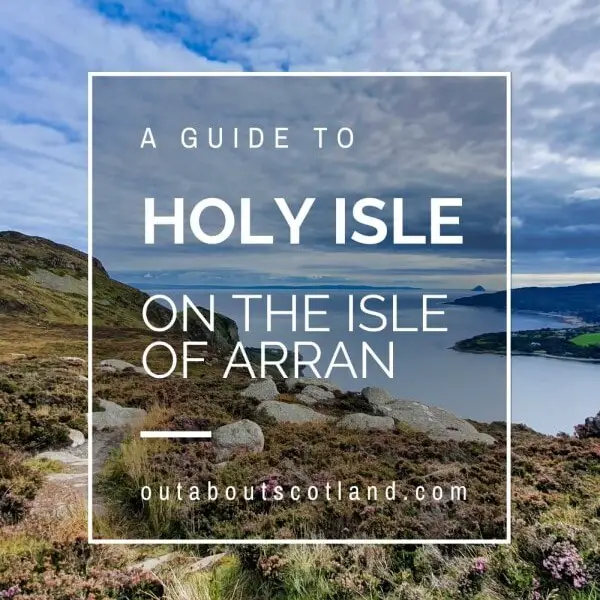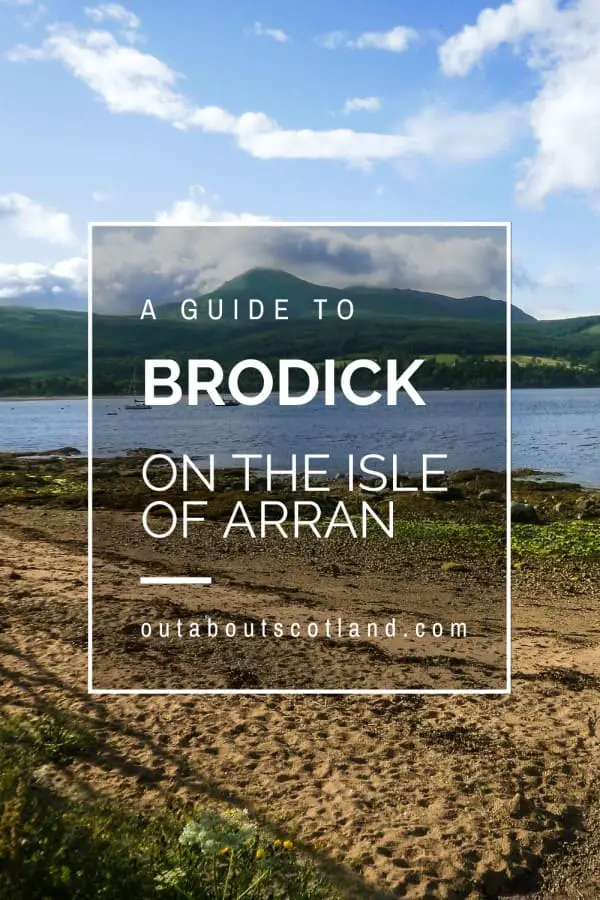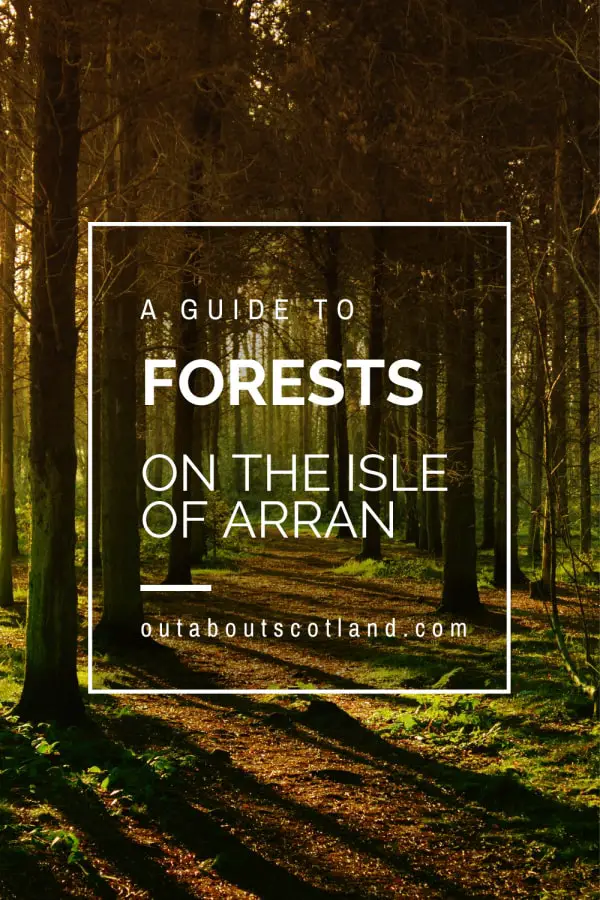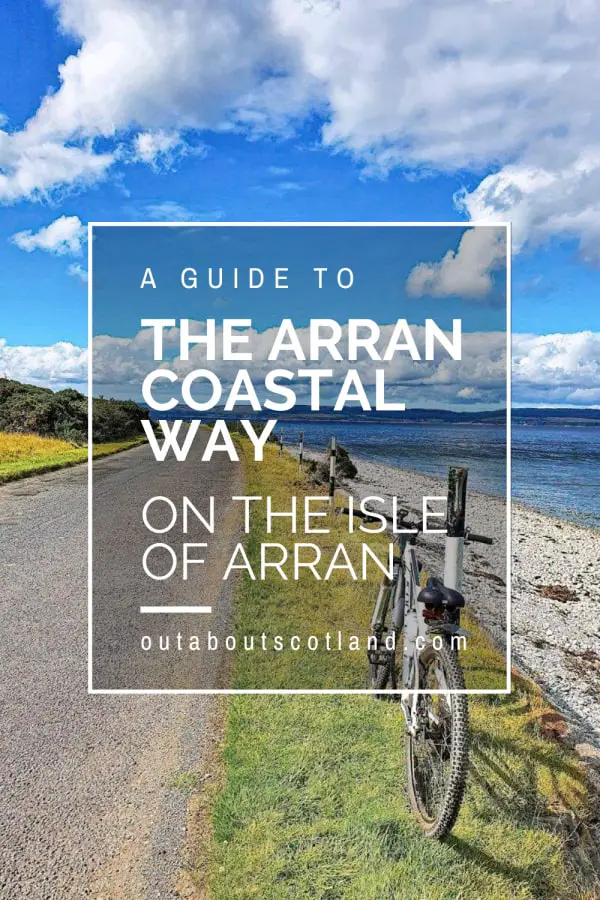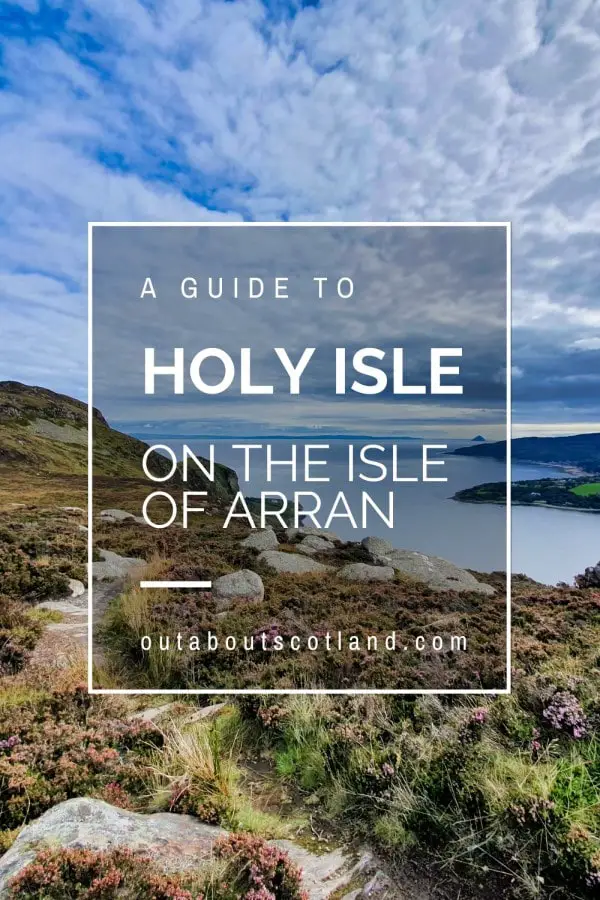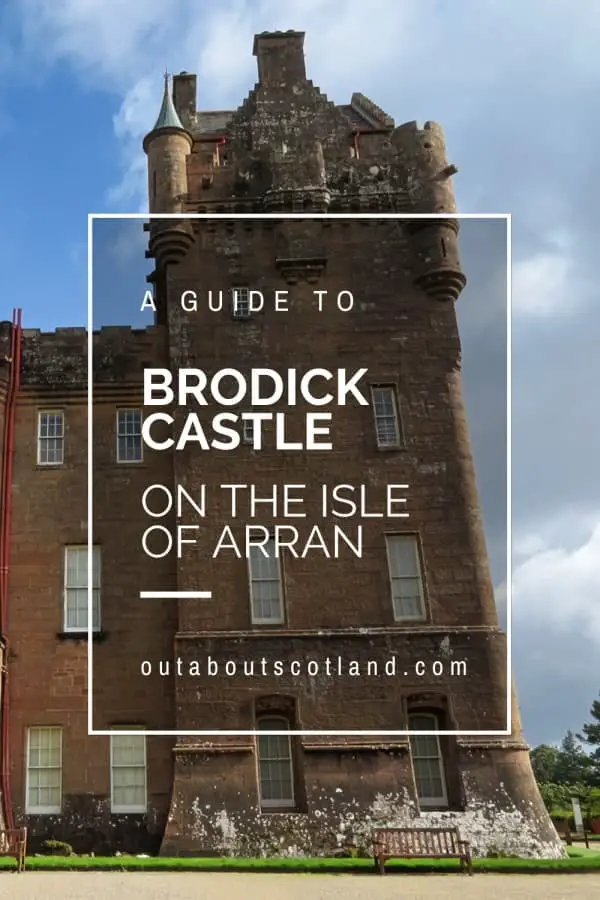Holy Isle is located close to the eastern shore of the Isle of Arran on Scotland’s west coast. This small (one square mile) island has a history of being a religious hermitage that dates back hundreds of years, and the tradition of quiet seclusion continues to this day at the Centre for World Peace and Health on the western edge of the island.
Visitors are welcome to walk around and enjoy the landscape on the many paths that circle Holy Isle, where they’ll find beautiful views across Arran and the Firth of Clyde.
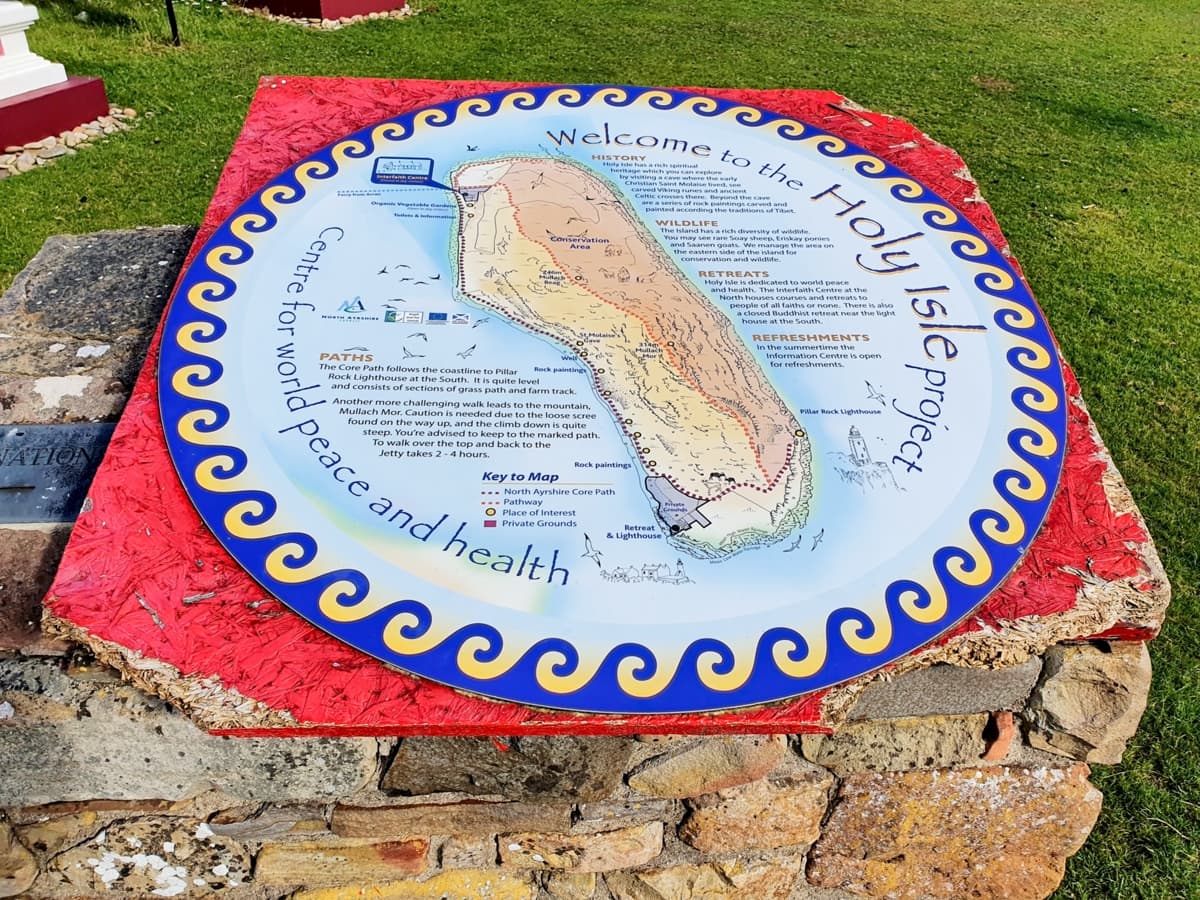
| Address: | Lamlash Bay, Lamlash, Isle Of Arran, KA27 8GB |
| Opening Hours: | 24/7 |
| Admission Price: | No fee to land on Holy Isle. Fee for Holy Isle ferry: see www.lamlashcruises.org.uk |
| Parking: | N/A |
| Contact: | 01770 601100 reception@holyisle.org |
| Facilities: | None |
| Photos: | Virtual Tour YouTube Video |
Overview
If you’ve been researching places to visit in Scotland, you might already know about the Isle of Arran, the small island off Scotland’s west coast that’s an easy journey from the country’s biggest city, Glasgow. It’s a stunning little island that really does have something to offer everyone, whether it’s a quick hike up a mountain (see my guide to Goatfell), a cycle through picturesque forests, or cycling around the amazing coastline.
What you might not know about Arran is that it has a smaller island located in Lamlash Bay, 3 miles south from the ferry terminal at Brodick. At just under 2 miles long and just over half a mile wide, Holy Isle is only really suitable for an afternoon excursion and there are a few reasons why you shouldn’t stay longer, which I’ll explain later.
The island has a spiritual history dating back at least 600 years, and you’ll find religious remnants all along the western side, including a spring that’s reputed to have healing powers and a hermit cave where the 6th-century monk St. Molaise lived.
The spiritual tradition continues to this day with the Centre for World Peace and Health Buddhist community, which offers residential courses and retreats at a large converted farmhouse near the ferry jetty, as well as a closed retreat on the southern point of the island.
Although Holy Isle is privately owned, it’s still possible to visit it as a tourist via the ferry from Lamlash Bay, or you could do what I did and kayak out there. Both options are good fun, although if you can, I definitely recommend sailing out there in a kayak as the views are fantastic.
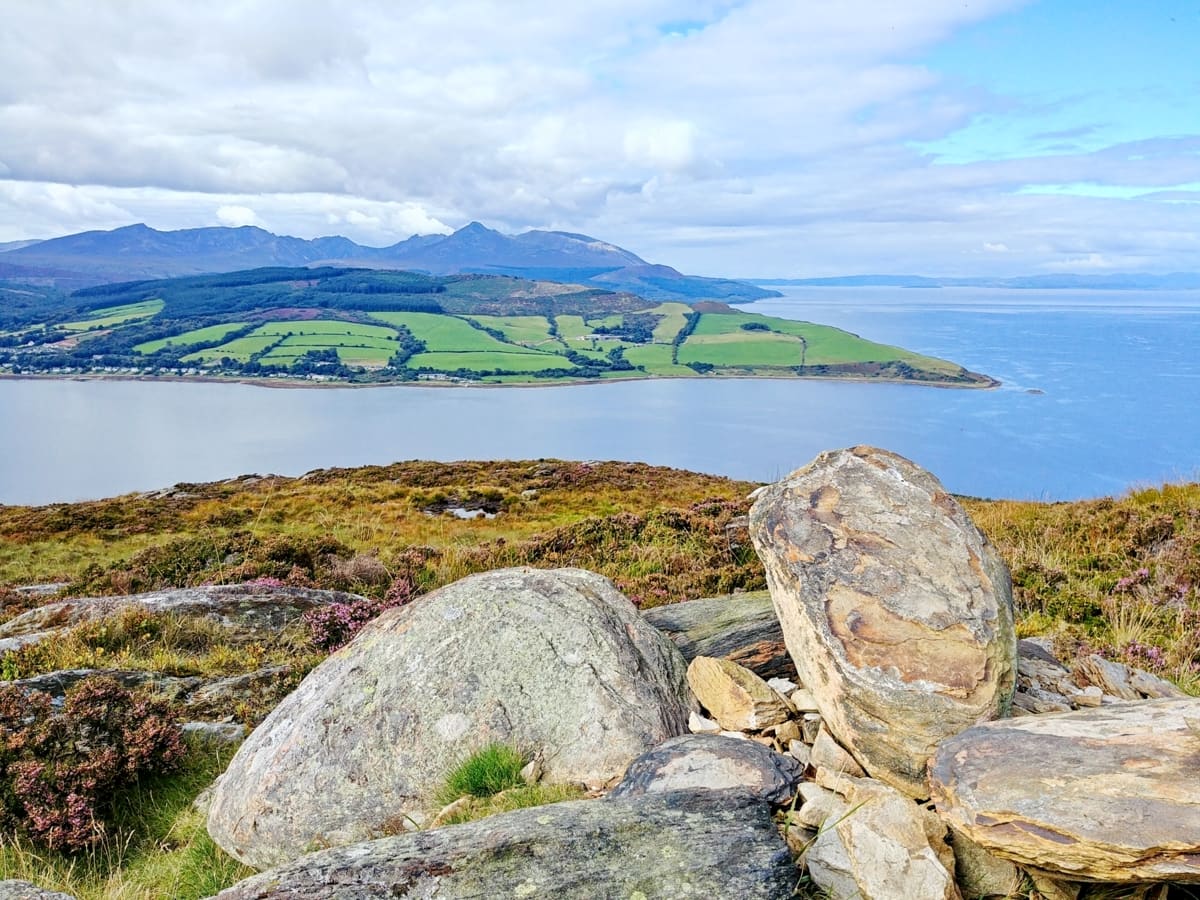
The stretch of water between Lamlash Bay and Holy Isle is sheltered so you won’t have to worry about rough seas most of the time, and the water is beautifully clean. Expect to see lots of fish, jellyfish, and marine plant life as you paddle around the bay. While it’s possible to kayak around the entire island, the sea gets a little choppy on the eastern side which borders the Firth of Clyde, so it’s best to stick to the western Lamlash Bay side instead.
You can land pretty much anywhere you like, but be aware that you’re not permitted to intrude on the island’s southern edge near the lighthouse, as that’s where the isolated retreat is located. Thankfully, there’s a decent-sized jetty at the other end of the island near a converted farmhouse.
There are a couple of rules once you get on the Holy Isle that must be observed, the first of which is no littering, and the second is no overnight camping. The only other request is that day visitors stick to the main paths, which is partly due to the conservation aspect, partly to do with respecting the Buddhists, and partly for your own safety when you climb the 1,000-foot Mullach Mor hill in the island’s centre.
As you approach the foot of the hill you’ll find large areas of heather and gorse, but these areas can be walked through thanks to the improvised path that has been trodden around the perimeter of the island. It won’t take long to complete the lower trail, perhaps an hour, but you’ll no doubt stop to take a million photos, or 3 to 4 hours if you also climb Mullach Mor.
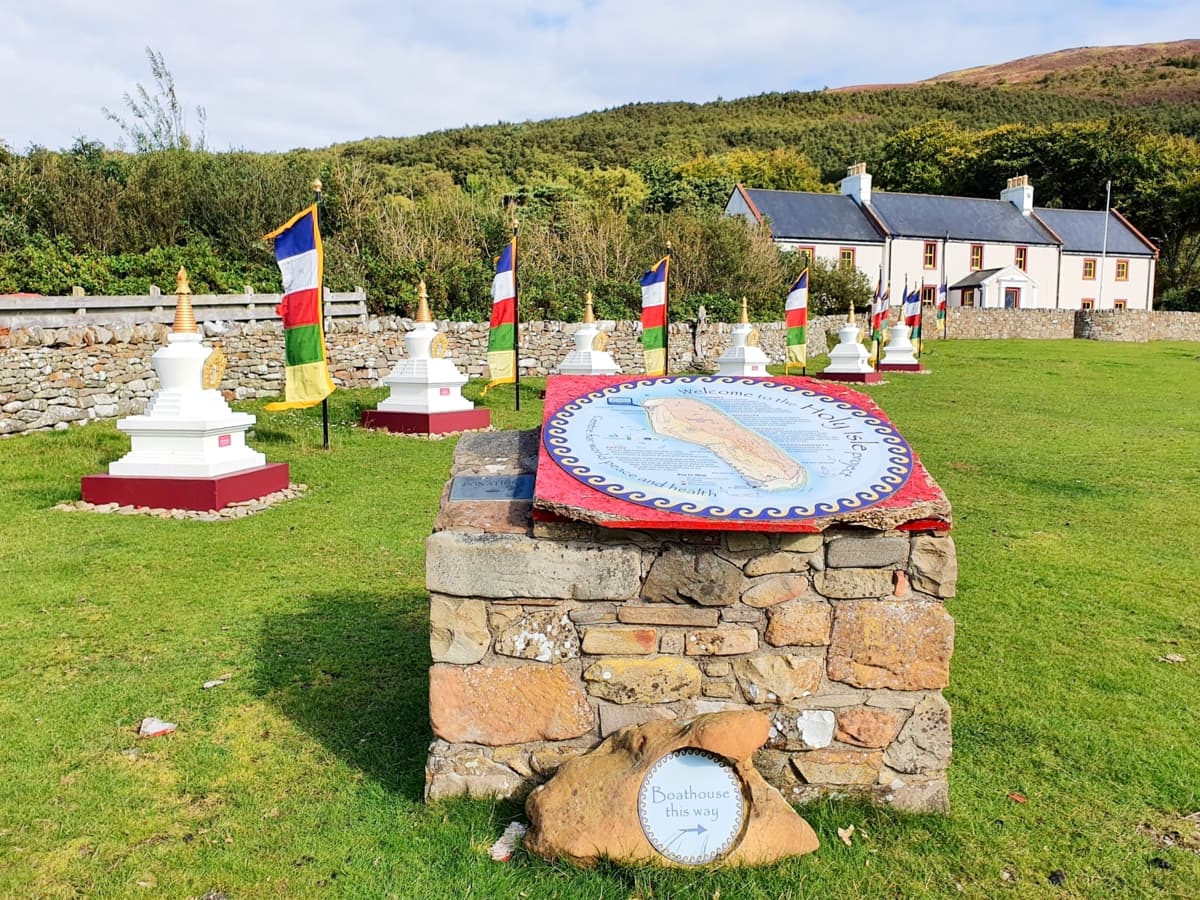
The Highlights
1: Lamlash Bay and the surrounding coastline are home to some of the cleanest sea water in Europe thanks to an extensive programme of conservation. This means the water is beautifully clear and is perfect for splashing around in. Even if you don’t step foot on Holy Isle, Lamlash Bay is still worth visiting.
2: The Samyé Ling Buddhist Community Centre offers retreats and courses in meditation and Buddhism that are open to visitors seeking a serene environment for reflection and personal growth.
3: The island is a designated Site of Special Scientific Interest (SSSI) due to its importance for breeding seabirds, including eiders, shags, and various species of gulls. Visitors can enjoy bird watching and encountering the island’s fauna while wandering the well-marked trails.
Visiting Tips
1: If you can, take your own kayak out to the island, but don’t try to swim from Lamlash. Although it seemed safe when I visited, an islander advised me not to swim across the stretch of water due to strong currents.
2: Given that Holy Isle is a spiritual retreat, visitors are asked to respect the tranquility and privacy of those on retreat. There are specific areas of the island open to tourists, while others are reserved for those on retreat.
3: The island does not have shops or restaurants, so be sure to bring water and any food you may need for your visit.
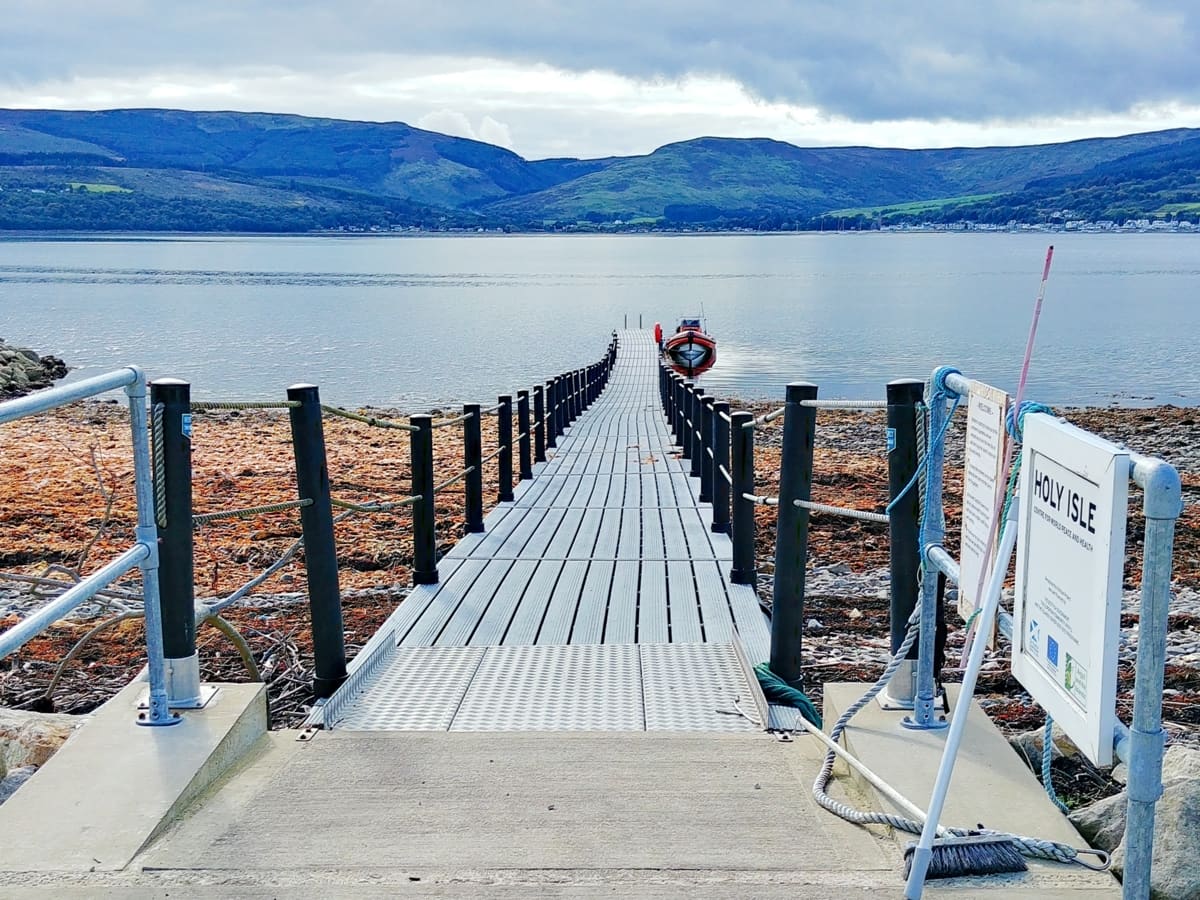
Tourist Information
From Holy Isle’s jetty, you’ll see the Buddhist retreat is decorated with colourful Tibetan flags and artwork, and you might see the occasional monk working. The mix of the traditional Scottish farmhouse and the Buddhist decorations makes for a great photo opportunity, but in the spirit of giving the residents their privacy, it would be a good idea not to spend too long there.
You’re free to walk around the island in either direction, but I recommend heading south along the shoreline. This will allow you to take in the views across the bay towards Arran as well as a series of Buddhist artworks that have been painted onto some of the larger rocks at the foot of Mullach Mor’s slopes. You’ll also find the St. Molaise cave and the holy spring midway along.
Don’t be surprised if you stumble across a few curious animals during your walk, as there are herds of wild Eriskay ponies, Saanen goats, and Soay sheep meandering about. The goats seem to enjoy the beaches, while the ponies can be found wandering through the bracken, so wherever you go, you’re guaranteed to pass them at some point.
The landscape flattens a little on the southern end of Holy Isle which is where you’ll find the smaller off-limits retreat and a small lighthouse but if you continue along the path you’ll skirt around these buildings and will eventually find yourself at a waypoint marker.
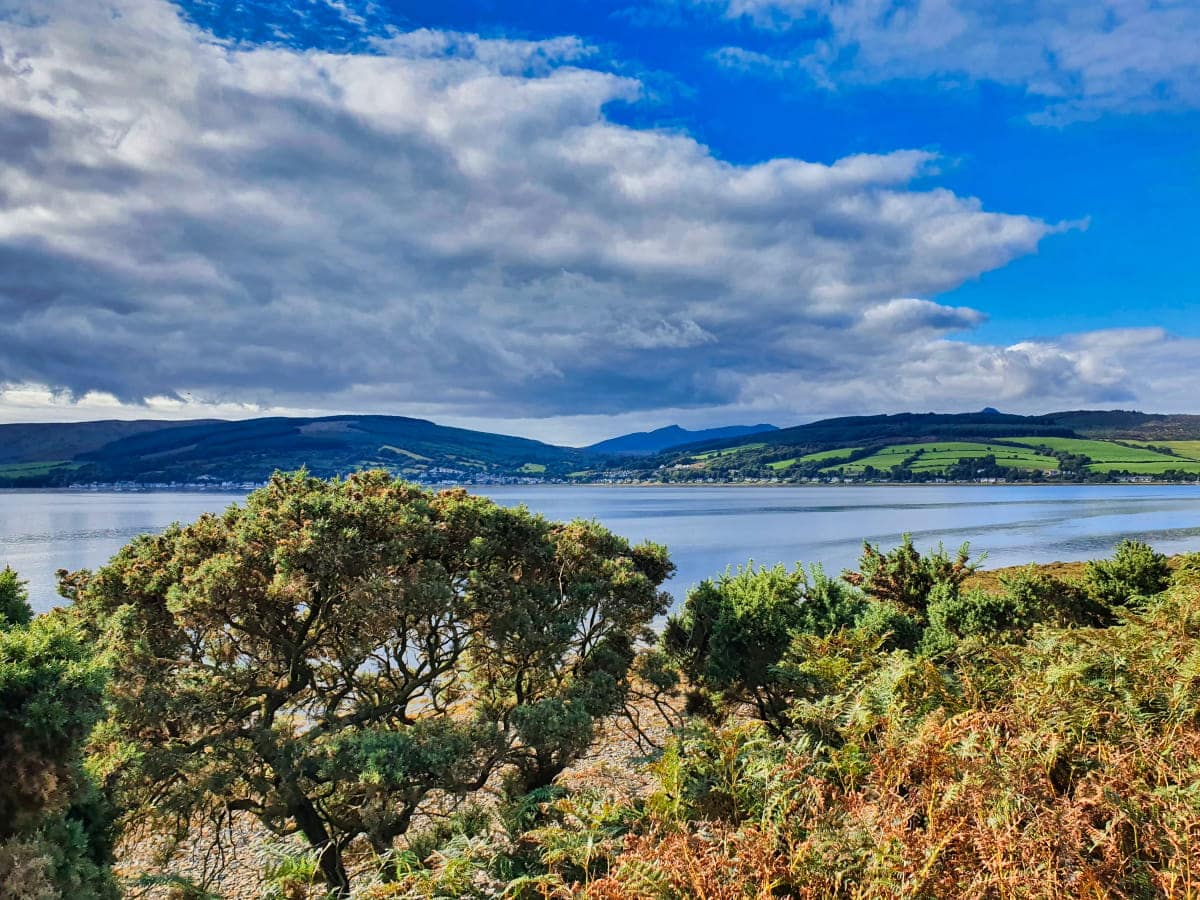
From the marker you have two options: either continue around the coastline to explore the eastern side of the island, or head up the path that leads you to the summit of the hill. If you continue along the path, you’ll find the terrain is almost identical to the Lamlash Bay side, although you will instead be presented with the Firth of Clyde and the mainland a few miles beyond.
There’s a small unmanned lighthouse a bit further up, but not much else, so I recommend backtracking and following the path that leads up to the Mullach Mor summit instead. This path is relatively easygoing for the first third but gets progressively steeper the higher up you go. I’m not talking Mount Everest-style epic climbs or anything, but be prepared for a bit of a scramble over rocks and boulders.
There are a few hidden crevasses just off the path that are made worse by lots of loose scree on the slopes, so for your own safety, you must stick to the path. There’s a small blue rope fence that borders the crevices, so when you see it, make sure you follow it precisely.
Once you get to the top of the hill, it levels off to a surprisingly flat plateau with a trig point in the centre that marks the pinnacle of the windswept Mullach Mor. It’s a lovely spot with some truly stunning views, but be aware that in the warmer months, the midges are horrific, so I advise you to make sure you’ve packed a can of Smidge in your bag. I’ve written a Complete Guide to Scottish Midges that will help you cope with the biting beasties, as well as a Guide to the Best Midge Repellents.
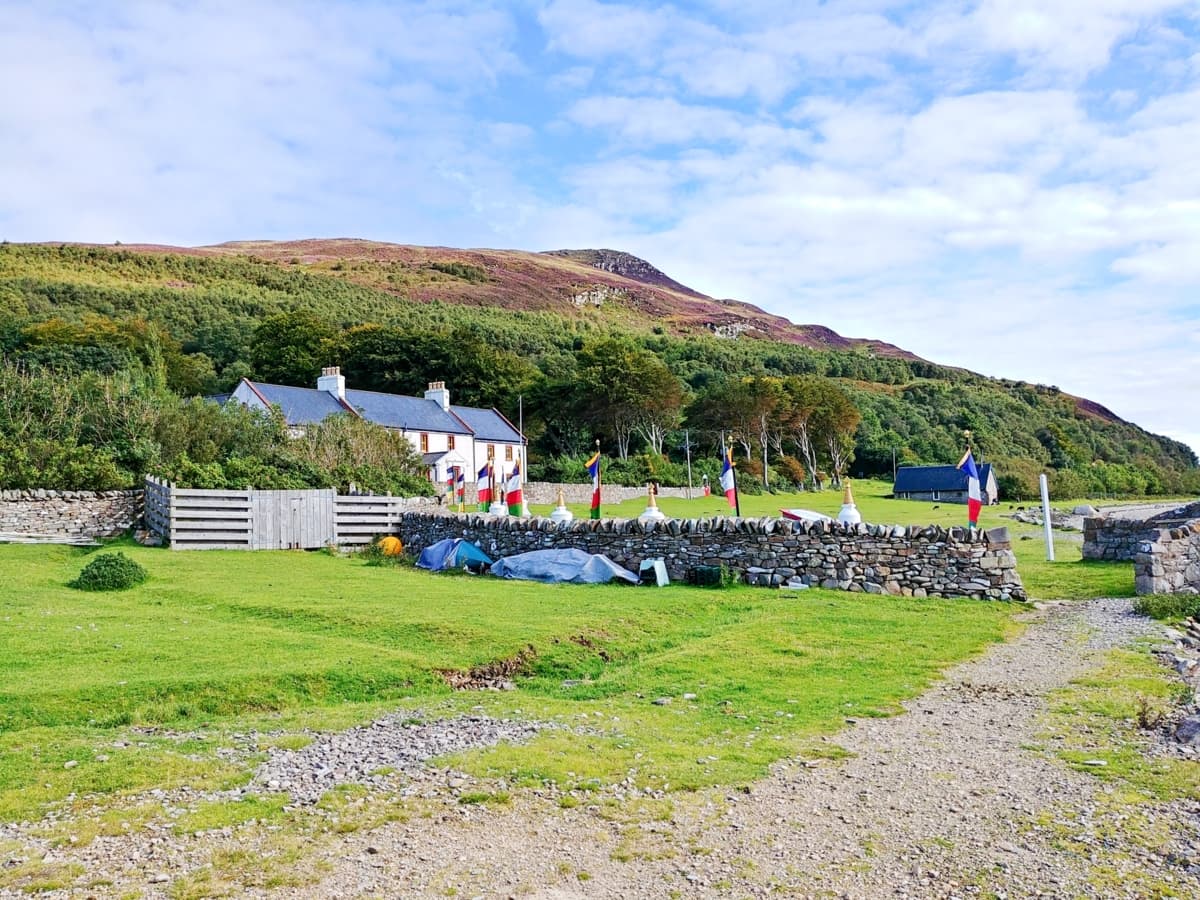
Things to Do
Meditation Retreats: The Holy Isle Project is a haven for spiritual seekers. Attend one of their meditation retreats to unwind and reconnect with yourself. The serene environment and the breathtaking views of the isle make it a perfect place for deep introspection and finding inner peace.
Wildlife Spotting: The island is a conservation area for rare species like Soay sheep, Saanen goats, and Eriskay ponies. Walking around the island, you’ll encounter these shy but friendly animals in their natural habitat which is a unique wildlife-spotting experience.
Lighthouse Exploration: Visit the Holy Isle Lighthouse at the southern tip of the island. The lighthouse was constructed in 1904 and offers an opportunity for beautiful photographs with the twinkling waters of the Firth of Clyde as a backdrop.
Well of the Holy Man: See the ‘Well of the Holy Man’, also known as St Molaise’s Well. It’s believed that the hermit monk Saint Molaise, who lived on Holy Isle in the 6th century, made a home in a cave there. The nearby spring is said to have healing properties.
Hiking and Exploration: The island offers several walking trails, each providing stunning views of the surrounding sea and landscapes. The highlight, though, is the track that meanders its way to the top of the island’s tallest hill, though you’ll need to pack anti-midge repellent to avoid being eaten alive. Click here to see reviews of the top repellents.

Things to Do Nearby
Brodick. Brodick, Isle of Arran KA27 8AZ. 9-minute drive to Lamlash Bay.
The main village on Arran and the location of the main ferry terminal. Brodick has a variety of shops, cafés and restaurants. Brodick Bay is a popular location for water sports and the Arran Coastal Way starts in the village.
Dyemill Forest. Lamlash, Isle of Arran, KA27 8NU. 4-minute drive to Lamlash Bay.
Mountain bikers and walkers frequently use Dyemill Forest, a popular coniferous area. The forest is an easy walk from Lamlash Bay.
Giant’s Graves. National Cycle Route 8, Isle of Arran KA27 8QP. 12-minute drive to Lamlash Bay.
This historic site is the location of two chambered tombs that are marked with large stones. The graves sit on an elevated position that offers stunning views across Lamlash Bay and Holy Isle.
Kingscross Viking Fort. Isle of Arran KA27 8RG. 9-minute drive to Lamlash Bay.
A historic landmark on a spit of land that looks across Lamlash Bay and Holy Isle. The peaceful site is popular with walkers.
Whiting Bay. Whiting Bay, Arran. 7-minute drive to Lamlash Bay.
The next bay south of Lamlash Bay has a long sandy beach that is popular with holidaymakers. Whiting Bay village has a couple of cafés and pubs.
Frequently Asked Questions
Does anyone live on Holy Isle?
Holy Isle in Lamlash Bay, Arran, is home to a community of Buddhist monks who follow the Kagyu school of Tibetan Buddhism. There are approximately 30 residents on Holy Isle.
How much does it cost to visit the Holy Isle?
There is no fee to visit the island other than ferry costs. See the official website for details of the Holy Isle Arran ferry.
Who owns Holy Isle?
Kay Morris, a devout Catholic who owned Holy Isle until 1992, sold the island to the Samye Ling Buddhist Community in that year. The monks of Holy Isle Arran continue to own the island.
What visitor facilities are there at Holy Isle?
There are no facilities on Holy Isle unless you are visiting the Centre For World Peace and Health. Visit the CFWPAH website for updated information on available facilities.

